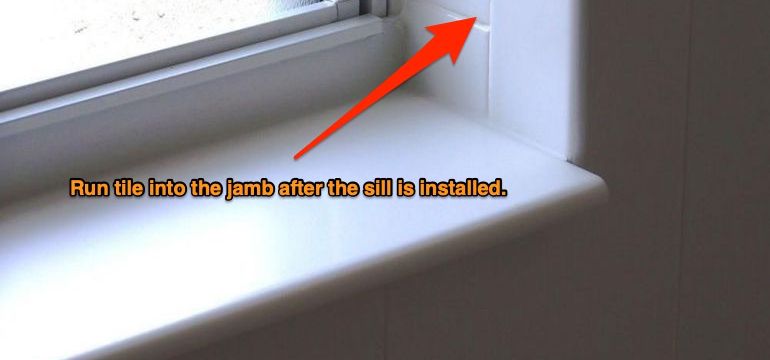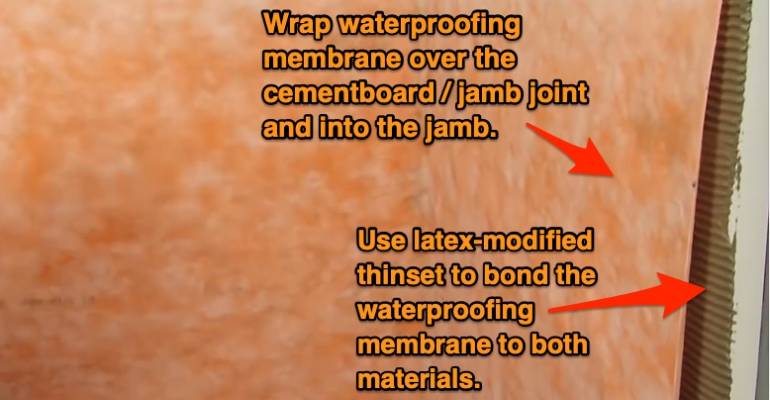A window in your shower can be a great addition to any major bathroom remodel. Whether you are moving things around or installing a brand new window, there are a few things you need to know about how to waterproof a window in a shower. Here is everything you need to consider when waterproofing your bathroom window.
Preparing to Waterproof a Window in a Shower
Learning how to waterproof a window in a shower is a relatively common thing. It is not too difficult to make sure that you seal this area of the home to protect yourself against potential moisture damage. There are many different ways you can go about waterproofing your window, but it helps to start in the right place.
 First and foremost, make sure your window is located outside the range of your showerhead’s spray.
First and foremost, make sure your window is located outside the range of your showerhead’s spray.
One of the best things you can do to ensure that you waterproof a bathroom window is to select the right type of window. Experts recommend choosing a vinyl-clad window with a wooden jamb. The vinyl is naturally resistant to any water or steam that arises from the shower, while the wood gives you a flat base to work from.

The easiest way to make sure that your wooden jamb is waterproof is to run the tile from the rest of the shower up into the jamb.

Begin by running cement board all the way up to the jamb and onto the plane of the jamb. Be sure to thoroughly caulk the joint where the two areas meet as this is your initial waterproof membrane.

Of course, you should never stop at just the bare minimum. Wrap the whole thing with a waterproof membrane secured with a latex-modified thinset.
The Finishing Touches

Once you have these basic steps accomplished, it is time to finish out the waterproofing process. Most professional contractors will recommend installing a pitched sill in the window jamb. This slanted approach allows water to run back down the sill and into the shower instead of leaving it to stagnate on the window jamb.
You can use extra thinset to prop up a piece of Corian until you reach the desired angle. Once again, you should be using a latex-modified thinset. It can help you to achieve the angle if you purposely mix it to be a little stiff so that you can prop the new sill up better.
With the pitched sill installed and dried, you can officially tile over top of it. Smooth out your grout lines and seal everything to the best of your ability. This not only makes your window waterproof, but it adds to the cohesive design of your shower. It will look like it was meant to be a part of your shower, even if the window was pre-existing to your new bathroom update or remodel.
When the tile dries, take some silicone caulk to any places where two materials are joined together. Fill every crack and seam with caulk to prevent water from working its way into the area beneath the tile.
Maintenance
It would be lovely if you could waterproof your window and then never think about it again, but that would be unrealistic. A window is going to be susceptible to expansion and contraction, just like the rest of your house. Particularly because it is installed on the exterior of your home, it is going to be sensitive to seasonal fluctuations.
These changes can cause some damage to the waterproof seal that you made around your window. Every six months to a year, you should evaluate whether some of your grout or caulking needs to be touched up. While this isn’t something you need to worry about on a regular basis, be sure to give it a good once-over a few times a year while doing your regular cleaning.
Installing a New Window
If you are starting your bathroom remodel from the beginning and want to build a shower with a window inside, then the answer may be even simpler for you. You will need to first install flashing in the appropriate way to keep water at bay. The flashing is the waterproofing part of the window that is typically put in prior to the window itself.
When installing flashing in a shower, it should cover both the inside and the outside. It should also lap over any waterproofing membrane that is under the tile and the siding. From here, you just need a wet-rated vinyl window or a fiberglass window that is designed for use in a shower.
A Great View
Having a window in your shower can be a great way to let natural light into your home and can give you a beautiful view during a relaxing shower. However, waterproofing is key to keeping your home in top shape. If you need a little help with some of the more technical aspects of waterproofing a window, be sure to give a local contractor a call!
- How to Cut Lexan - September 25, 2020
- Mineral Spirits vs. Mineral Oil - September 25, 2020
- Shellac vs. Polyurethane - September 24, 2020
